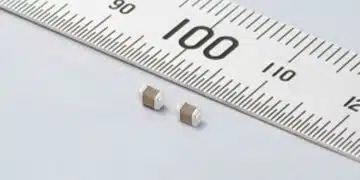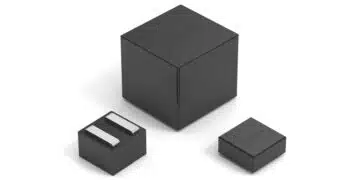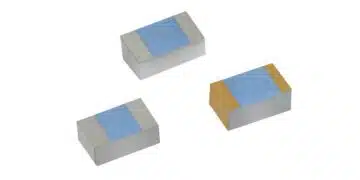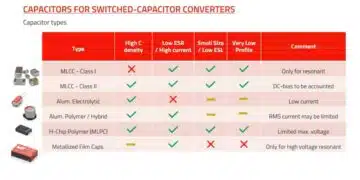source: TTIMarketEye article
04.14.2016 // Murray Slovick // Passives
The annual Applied Power Electronics Conference (APEC) and exposition was held at the Long Beach (CA) Convention & Entertainment Center last month. As at the last few APECs, Wide Bandgap (WBG) materials GaN and SiC were the subject of many of the technical papers (by one count there were over 100 technical papers and presentations that referenced GaN) presented at the conference. By way of review, among the advantages WBG semiconductors have over Si in power electronics are lower losses for higher efficiency, higher switching frequencies, the ability to withstand higher operating temperatures and high breakdown voltages.
This time around there was also more actual WBG products and end applications on display.
In his APEC presentation “Market Forecasts for Silicon Carbide and Gallium Nitride Power Semiconductors”, Jonathan Liao, Senior Analyst at IHS Technology noted that In 2015 a dramatic pricing shift occurred in SiC discrete pricing, especially for SiC MOSFETs. Compared to 2012, he said, SiC Diode prices fell by -35%, SiC MOSFET prices fell by -50% and SiC JFET prices fell by -39%.
As for GaN, IHS predicts that 600V GaN transistor prices should match Si equivalents in 2018-2019. The research firm believes GaN will become established in high-end computing and telecom power supply applications first (IHS believes that in fact it has already started) but that GaN still must demonstrate reliability before other industrial sectors will adopt the technology.
Overall, he concluded, SiC is turning the corner now in 2016 and GaN is sure to follow.
The new SiC and GaN semiconductor switches operate at higher temperatures and voltages As a result these applications require the use of capacitors designed to withstand the electric and thermal stresses required. And that seems to be generating renewed interest in high temp film capacitors (as opposed, perhaps, to the traditional reliance on aluminum electrolytic capacitors for energy holdup and input/output filters) and low ESL. Because of the ability of, for example, silicon carbide devices to operate at higher frequencies, smaller inductors and capacitors used in inverters and converters can be used instead of larger value capacitors and inductors, which are going to consume more board space.
In addition to professional education seminars and technical sessions the exhibition portion of APEC provides a venue for exhibitors to showcase their latest power management and supply solutions, aimed at increasing operating efficiency, reducing standby power and providing a higher level of component integration.
Here’s a few of the new and notable capacitor product offerings and introductions at APEC (presented alphabetically by supplier):
AVX Corporation introduced its TAZ Series HRC6000, described as next-generation medical-grade, solid tantalum capacitors. Said to deliver lower DC leakage (DCL) values than any competitive offering — down to 0.0025CV, or 25% of typical industry limits — and requiring significantly less voltage de-rating than the standard 50% recommendation for solid tantalum capacitors — as low as 20% for filtering applications, and as low as 0% for pacing, hold-up, and charging application — the series is well-suited for use in a variety of medical implantable and life support devices.
TAZ Series HRC6000 capacitors are currently available in E-cases (Metric Code: 5025) with three rated voltages (6V, 10V, and 15V), three capacitance tolerances (±5%, ±10%, and ±20%), and with capacitance values spanning 10μF to 33μF. Additional series introductions scheduled for later this year will include A-cases (Metric Code: 2512) with the same voltage ratings and capacitance values spanning 0.68μF to 1.5μF. Rated operating temperatures for the series range from -55°C to +125°C, and the capacitors can be supplied with one of four termination finishes: solder-plated, solder-fused, gold-plated, and 100% tin, the latter two of which are lead-free compatible and RoHS compliant.
AVX also showcased several significant series extensions including new high CV TWA Series COTS+ wet tantalum capacitors for high-reliability defense, avionics, radar, and power-supply applications; high CV TWA-Y Series wet tantalum capacitors for avionics, industrial, and down-hole applications; and F98 Series high CV tantalum capacitors for mobile and wearable electronics.
Displayed at the KEMET booth was the company’s F862 enhanced polypropylene film capacitors, suitable for high-humidity or series-coupling applications. The F862 Series is constructed of metallized polypropylene film encapsulated with self-extinguishing resin in a box material recognized by UL 94 V–0. According to KEMET, when used as X2 capacitors in equipment deployed in harsh environments, such as smart meters, F862 devices can achieve life ratings over 15 years compared to standard capacitors that may last only two or three years. The F862 Series meets Automotive Electronics Council’s AEC–Q200 qualification requirements.
KEMET also demonstrated its new electronic components smartphone/tablet app, which provides access to over 350 capacitor and electronic component datasheets directly on the user’s device. The app features CapacitorEdge, a parts finder capable of searching KEMET’s database of nearly 6 million part numbers, as well as its Engineering Center online educational resource for designing with passive components, and the K-SIM simulator for analyzing capacitor performance over a variety of conditions.
KEMET is also working on new multilayer ceramic capacitors (MLCCs) featuring its advanced U2J Class-1 dielectric technology. The high-stability dielectric is expected to extend the application reach of compact class-1 MLCCs.
TDK Corporation has expanded its CGA lineup of high-voltage MLCCs for automotive applications. The new CGA6 and CGA9 series of MLCCs, which have a rated voltage of 1000 V, feature types with capacitances ranging from 1 nF to 33 nF, said by the company to be the world’s widest range. The MLCCs are available with both C0G and NP0 temperature characteristics. They feature a temperature coefficient of 0 ±30 ppm/°C max. and temperature ranges of 55 °C to +125 °C and -55 °C to +150 °C, respectively. According to TDK, their capacitance drift over temperature is negligible and the new capacitors exhibit nearly no drift over voltage and time, making them suitable for applications where high capacitance stability of the components is essential. The CGA6 and CGA9 MLCCs measure in with footprints of 3.2 mm x 2.5 mm (EIA 1210) and 5.7 mm x 5.0 mm (EIA 2220), respectively. Because the new products are qualified according to AEC-Q200 they are suitable for use in the engine compartments of automobiles and other automotive applications.
Vishay’s passive components on display at APEC included a wide variety of the company’s latest capacitors, resistors, and inductors. For energy harvesting and power backup applications, Vishay energy storage capacitors — ENYCAP —included the 196 HVC series of hybrid devices with energy density of 13 Ws/g, and the 220 EDLC series of electrical double-layer capacitors in power and energy versions. Also displayed were Vishay snap-in 096PLL-4TSI and screw terminal 102 PHR-ST aluminum capacitors for drive applications, the industry’s first Y1 20 nF capacitor — an extension of the Vishay Cera-Mite 440L series — and Vishay’s AY2 and VY1 compact series of AC-line-rated ceramic disc safety capacitors. Other featured parts included the MKP1858 and MKP1847 metallized polypropylene capacitors for DC-linking and AC filtering; and ESTA GLI, EMKP, HDMKP, and DCMKP capacitors for power electronics.


































